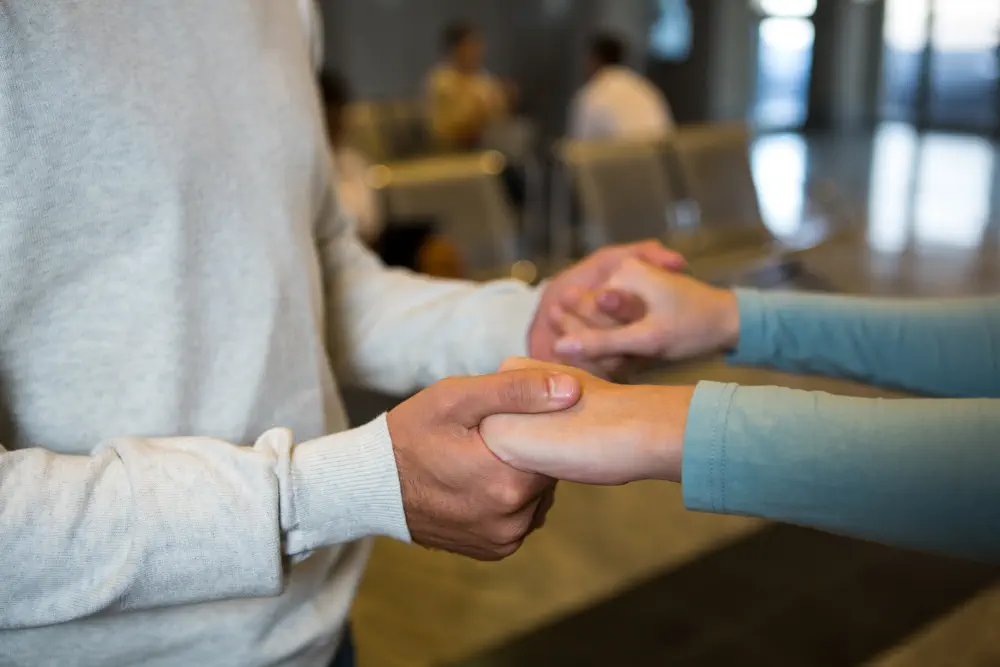We offer medical detox and multiple addiction treatment options in our
luxury treatment centres in Port Hope, Cobourg, and Ottawa.
Shopping Addiction in the Digital Age
Shopping has always been a part of our lives, but the way we shop today differs greatly from the past. The rise and expansion of online shopping and social media platforms have transformed what was once an occasional activity into an everyday temptation. Buying in the digital era is no longer constrained by store hours or locations; you can buy anytime, anywhere, with just a few clicks. This convenience has created many opportunities but also presents significant challenges, especially for people vulnerable to addictive behaviour.
Key Takeaways
- Digital Shopping’s Ease Fuels Compulsion: With 24/7 access and targeted ads, digital shopping makes compulsive buying easy.
- Emotional Roots of Shopping Addiction: Many shop to cope with stress or loneliness, creating a cycle of relief followed by guilt and financial strain.
- Psychological Drivers: Shopping releases dopamine, reinforcing buying as a source of temporary happiness.
- Social Media Influence: Influencers and ads on social media create urgency and FOMO, increasing shopping temptation.
- Paths to Recovery: Therapy, support groups, and financial counselling can help break the cycle and address underlying causes.
Shopping addiction isn’t simply about buying things; it’s about the emotional needs driving these purchases. Some use shopping as an escape from stress, anxiety, or loneliness. This brief lift from a new purchase often gives way to financial strain, guilt, and loss of control. With targeted ads, one-click purchases, and constant exposure to the latest products, it’s easy to see how shopping can spiral out of control.

What Is a Shopping Addiction?
Wondering if your shopping habits are more than just an addiction to a good deal? Shopping addiction is defined as the compulsive need to purchase items, often to find emotional relief. While there may be excitement at the time of purchase, it’s typically followed by guilt, financial strain, or a sense of lost control. This is more than occasional retail therapy; it’s an inability to stop, even when it has negative impacts on one’s life. Shopping addicts may find themselves buying things they don’t need, simply to feel a fleeting high or to escape emotional pain.
Shopping addiction often becomes a cycle. For instance, someone may shop to cope with negative feelings, but afterward feel worse, leading them to shop again. Such cycles can create severe financial problems, strain relationships, and produce overwhelming shame or guilt. Recognizing these patterns is the first step toward breaking free from shopping addiction.

Can You Get Addicted to Online Shopping?
The convenience of the digital age has made shopping easier than ever, but it has also introduced a new dimension to shopping addiction. Unlike traditional shopping, online platforms are always available. You can browse, add items to your cart, and complete purchases with just a few clicks, at any time of the day or night. This constant access, combined with personalized ads and notifications, makes it incredibly hard to resist.
With digital shopping, convenience and immediate gratification are huge factors. Personalized ads play a major role; algorithms suggest products tailored to your preferences, turning a simple want into an urgent need. This manipulation can easily lead to compulsive buying, especially when shopping is used as a coping mechanism for negative emotions.
Unlike physical stores with set hours and the need for physical effort to visit, online shopping is always available, easily disguising casual browsing as compulsive spending. If you find yourself unable to resist flash sales, constantly browsing e-commerce sites, or buying items without considering consequences, you may be facing an addiction to online shopping.
Psychological Aspects of Shopping Addiction
Shopping addiction often stems from deeper psychological mechanisms. When someone makes a purchase, dopamine — a pleasure and reward chemical — is released in the brain. This dopamine release creates feelings of thrill and happiness, which can become addictive. Over time, the brain begins to associate shopping with positive feelings.
For many people, shopping becomes a way to manage emotions like stress, loneliness, or anxiety. Purchasing new items may temporarily alleviate these feelings, but this relief is short-lived. A cycle of emotional relief followed by guilt or regret makes it difficult to break free from shopping addiction. The constant advertisements and promotions in the digital era add to this, tapping into our desires and emotions to make shopping seem irresistible.
Understanding the psychological aspects of shopping addiction is crucial to breaking the cycle. Recognizing that emotional needs drive the urge to shop can help one find healthier ways to cope.
Types of Shopping Addiction
Not all shopping addictions are alike. Here are some common types of compulsive buying behaviour:
- Impulse Buying: Making unplanned purchases on a whim.
- Bargain Hunting: Feeling compelled to buy items simply because they’re on sale, even if unneeded.
- Emotional Shopping: Using shopping to cope with emotions like stress, sadness, or boredom.
- Compulsive Collecting: Obsessively collecting specific items, such as shoes or gadgets, leading to excessive spending.
Identifying your own patterns can help in finding targeted ways to address the behaviour.
How Social Media Influences Shopping Addiction
Social media has a strong influence on shopping addiction. Platforms like Instagram, TikTok, and Facebook are filled with brand ambassadors promoting products, often blurring the line between genuine recommendations and advertisements. Constant exposure to products and the desire to stay on-trend can create a powerful urge to shop.
Influencer culture often makes shopping feel like a social activity, linking it to self-worth and social status. Fear of missing out (FOMO) is a common tactic marketers use to drive impulse purchases. Flash sales, limited-edition items, and countdown timers create urgency, making it even harder to resist.
Reducing social media’s influence on your spending might involve unfollowing accounts that encourage unnecessary shopping, limiting time on social platforms, or using ad-blocking browser extensions. Becoming more aware of how social media shapes consumer behaviour is the first step in regaining control.

How Digital Shopping Addiction Impacts Daily Life
Digital shopping addiction can have serious effects on daily life. Financially, impulsive spending can lead to mounting debt and chronic stress about making ends meet. While online shopping may seem harmless, credit card bills and accumulated debt can reveal a far more daunting reality.
Shopping addiction also strains relationships. Concealing purchases or lying to loved ones about spending habits erodes trust and creates tension between partners, family members, and friends. The emotional stress of hiding purchases can lead to isolation and shame.
Emotionally, shopping addiction triggers guilt, anxiety, and emotional distress. Excessive purchases may create clutter, making a home feel overwhelming and out of control. Often, the initial excitement of buying something new is quickly replaced by regret and guilt, deepening emotional turmoil. For many, breaking this cycle is challenging without support.

Signs of Shopping Addiction
Recognizing the signs of shopping addiction is essential for early intervention. Common indicators include:
- Frequent impulsive buying without real need or plan.
- Hiding purchases from loved ones.
- Financial strain or debt from excessive spending.
- Shopping as a way to cope with negative emotions.
- Feelings of regret or guilt after buying.
If these signs sound familiar, it may be time to consider shopping addiction treatment, which can help regain control over spending and address the underlying emotional drivers.
When to Get Help?
When does a love of shopping become a reason to seek professional help? If shopping habits are causing serious debt, straining relationships, or leading to intense emotional distress, it’s time to seek help. Acknowledging the problem is a brave first step toward recovery.
Therapeutic Support Options
For those struggling with online shopping addiction, several support options can make a difference. Therapy, especially Cognitive Behavioural Therapy (CBT), can help identify and change the thoughts and behaviours driving compulsive spending. CBT focuses on recognizing negative thought patterns and replacing them with healthier responses, which is particularly effective in addressing spending triggers linked to emotions.
Support Groups for Shopping Addiction
Support groups can be very helpful. Sharing experiences with others facing similar issues provides emotional support, reduces feelings of isolation, and offers strategies for managing addiction. Support groups also inspire and encourage as members witness others’ progress.
Rehabilitation and Intensive Support
In severe cases, rehabilitation programs may be beneficial, particularly when shopping addiction is part of broader addictive behaviour patterns, such as substance abuse. Rehabilitation provides a safe environment to address deeper issues and develop healthier coping mechanisms.

Financial Counselling for Recovery
Financial counselling is another crucial component of shopping addiction recovery. A financial counsellor can help establish a budget, set spending limits, and manage debt, providing a realistic plan to regain financial control.
If shopping is causing significant problems in your life, don’t wait for things to worsen. Early intervention is key to regaining control over your finances and life.
Moving Forward: Overcoming Shopping Addiction for a Better Life
Shopping addiction in the digital age can be overwhelming, but remember, you’re not alone. With the right support, it’s possible to regain control over your spending habits. Start by recognizing the problem and reaching out for help. Resources like therapy, support groups, and financial counselling can empower you to make lasting changes.
Recovery takes time and setbacks are possible, but every step forward counts. The goal isn’t just to stop spending but to understand and address the emotional triggers behind the addiction. If any of the signs resonate, reach out — there’s always hope for recovery. You deserve a life free from compulsive shopping and filled with decisions in your best interest.
FAQ
What causes shopping addiction?
Underlying emotional needs often drive shopping addiction. People may shop to cope with stress, loneliness, or sadness. The instant gratification of buying something new can temporarily mask these emotions.
What are the symptoms of a shopping addiction?
Symptoms include impulsive buying, hiding purchases, financial strain, and shopping to manage emotions. Recognizing these signs is the first step toward seeking help.
How can I break my online shopping habits?
Identifying triggers, setting limits, and seeking support through therapy or financial counselling are effective ways to break spending habits.
Is shopping addiction treatable?
Yes, shopping addiction is treatable. Treatment may include therapy, support groups, and financial counselling.
Where can I find help for shopping addiction?
Support groups, therapists, and financial counsellors offer assistance with managing addiction, available locally and online.
Can shopping addiction lead to other addictions?
Yes, shopping addiction can sometimes lead to or coincide with other addictive behaviours, such as substance abuse or gambling. The underlying emotional needs that drive shopping addiction may make individuals more vulnerable to other types of addiction.
What is the difference between retail therapy and shopping addiction?
Retail therapy involves occasional shopping to lift one’s mood, generally without adverse consequences. In contrast, shopping addiction is a compulsive behaviour that leads to financial strain, emotional distress, and a lack of control over spending.
Are some people more prone to shopping addiction than others?
Yes, certain factors, such as genetics, personality traits, underlying mental health conditions, and environmental influences, can make some individuals more susceptible to shopping addiction. People with a history of other addictive behaviours or impulse control issues may also be at higher risk.






